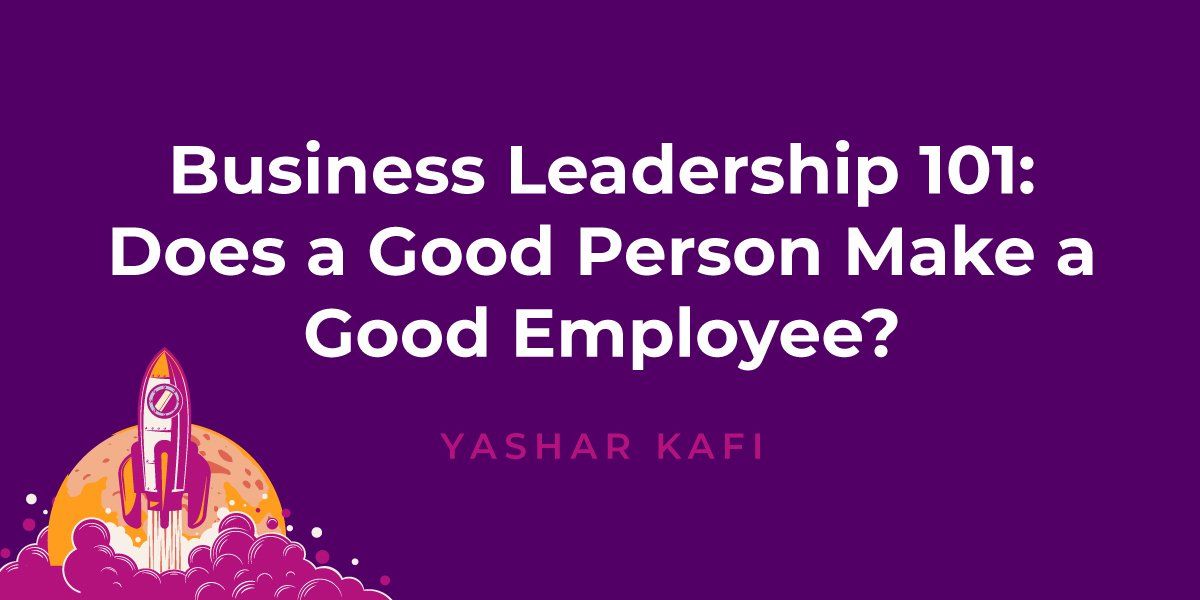Business Leadership 101: Does a Good Person Make a Good Employee?
If you are in business leadership and are hiring, you already know that it can sometimes feel like Mission Impossible. What is a top priority?
Is simply being a good person enough? Does an employee have to be a good person to be a good employee? Obviously, everyone wants good people on their team, but what does that actually mean? We answer this and more, so you can find your right fit.
What Makes a Good Person Today?
Much like the idea of beauty being in the eye of the beholder, the opinion of being a good person is highly subjective. What one person thinks of as being “good,” someone else may disagree with and have an entirely different perspective on. It all comes down to individual values.
Most people, however, will at least agree that there are some inherent characteristics a “good” person will have. For example, a good person does not want to hurt anyone. They also don’t want to steal from others. Once this baseline is established, it gets a little more nuanced.
In most cases, a good person wants to see others succeed and do well. After all, most people will experience jealousy at some point, but this doesn’t necessarily make them immoral—just human. We are talking about the overall character of the individual.
So, how discerning are we when it comes to setting the bar for “goodness”? A fascinating
survey in Inc. found that 83% of people believe that people are fundamentally good. The survey also revealed that 80% of respondents believe people have a responsibility to help others, while 93% of respondents reported having good relationships with their colleagues.
Good People in the World Are Trending Up
So, it looks like we are feeling good—or that goodness is all around us. And the “good” news gets even better. If we look at some statistics published by Vox, it seems that good things and people are changing the world.
According to Vox statistics, there is less poverty, less child labor, fewer homicides, and even fewer violent crimes. We must be doing something right. But do these upward trends translate to our teams?
Business Leadership and Good People
Earlier in this article, we discussed Inc.’s findings that 93% of people reported liking their colleagues. So, that must mean good people make the best employees. Well, yes, but also no.
Liking coworkers doesn’t always mean they will be the best match for the job. Even if someone has good intentions, unfortunately, it doesn’t always translate into good performance at work. Everyone has been touched by a person that is so likable you want them to do well. But for whatever reason, their wonderful personalities don’t translate to excellence in the office setting.
This is an often seen conundrum—or maybe we can see it as an unfortunate schism—that puts leaders in a difficult position because how do you reprimand someone who is giving it their all? There is no black and white answer to deal with this situation.
The only real positive in this scenario is that, typically, when someone is a “good” person, they respond to feedback better—in a healthy, rational manner. Also, if you see potential in a candidate and can take the time to develop a strong manger-employee relationship, you can hone that individual’s skills more. After all, everyone wins if you can have it all—the great character with a skill set that’s a fit for the role you need filled.
What Are the Best Employee Qualities?
Luckily for leaders everywhere, there is typically a lot of overlap between “good people” and effective employees. The top qualities to look for in a good employee include a healthy mix of both soft skills and hard skills:
· Communication
· Strategic thinking
· Interpersonal skills
· Problem-solving skills
· Dedication
· Conflict management
· Technical aptitude
That’s just to name a few. Also, a huge resource and essential step before hiring is to ask yourself the hard questions.
Are you hiring and wanting to ensure you find the best fit, or simply looking to up your business strategy game? Reach out to the AMP team and get started today.




